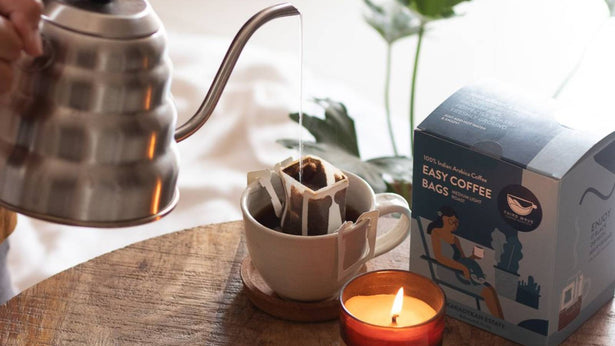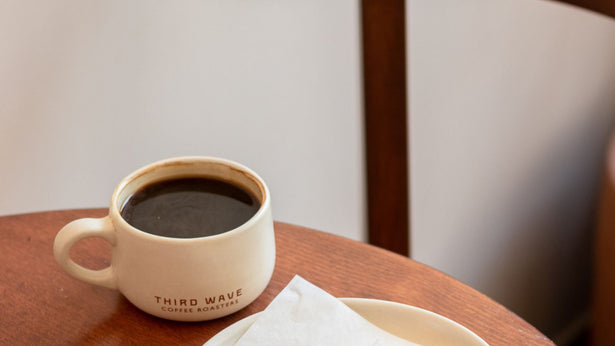Coffee roasting is the process of taking green, unroasted coffee beans and transforming them into a delicious cup of joe. It is essential in making great-tasting coffee as it brings out unique aromas and flavours that are not found in raw beans. By understanding the types of coffee roasts and their profiles, you can choose the perfect roast for your own tastes.
Roasting coffee is an art and a science that's capable of influencing the flavour of your beloved cup. Of course, the type of bean you choose will determine to some extent how it tastes; however, most flavours are drawn from the roasting process itself. The duration of this stage can alter everything from body to acidity - ultimately creating entirely different coffee flavours with each roast! This article will be your guide to the essential coffee roasts and explain how light, medium, and dark affect flavour. We'll help you discover which roast is best for producing an exceptional cup of delicious coffee according to your taste!
The Different Coffee Roasts
Mastering the art of coffee roasting takes time and patience; it requires years to learn how to interpret bean colour changes while making split-second decisions that will shape the final product. Although each coffee roaster has likely perfected their own personalised flavour profile, typically these can be categorised into four main shades: light, medium-dark or dark.
Light Coffee Roasts
At the first crack, when temperatures reach between 180°C – 205°C, a roaster will typically recognise that they have achieved a Light Roast. The beans at this stage of expansion and cracking appear pale and dry; meanwhile, brewed coffee from these light roast beans exhibits both a lighter body as well as distinct notes of acidity.
Lightly roasted coffee beans are usually free of surface oils due to their short roasting time and high temperature. These beans also possess higher caffeine levels than other roast types because the longer they're heated, the more acidity and caffeine are extracted. The distinct flavour of these beans is attributed to the abbreviated roasting process, which interrupts some chemical reactions in the bean. Additionally, the fewer flavours extracted from this shorter roasting method make it easier for coffee enthusiasts to identify its origin.
Medium Coffee Roasts
If you're searching for the sweet spot in roasting, look no further than medium-roasted beans. Roasting temperatures of 210°C to 220°C are typically associated with this flavour profile and create a dry bean appearance. The longer roast time doesn't just bring out more flavours; it also reduces the acidity that can be present in darker roasted coffee. Achieving an ideal balance between aroma, acidity and flavour have made the medium roast preferred amongst many coffee drinkers.
Medium-Dark Coffee Roasts
When the temperature reaches between 225°C – 230°C, medium-dark roast coffee beans are ready to be harvested. The second crack will cause them to have a dark brown colour and visible oil on their surface. Since high temperatures render most of its acidity useless, aromas that were not previously evident can now be appreciated for all their complexity; making it richer in taste with more body and minimal sourness. Examples of this type of roast include Full-City Roast or Vienna Roast (which you can experience in the Vienna Coffee Bean blend from one of the best coffee brands in India).
Dark Coffee Roasts
When the beans reach 240°C - 250°C, the dark roast coffee is immediately discernible—the beans become black, glossy and overly oily. This process obliterates most of the bean's distinctive flavours; instead, its taste heavily relies on how long it was roasted. The prolonged heat causes the beans to contain a fuller, more indulgent flavour with natural sugars and caramelized notes. The darker the bean, the less acidic it gets - so you can expect a bolder taste without any hint of sharpness or sourness. Enjoy an unparalleled cup of coffee that boasts a full body and sweetness.
Before the roasting process begins, coffee beans possess none of their typical attributes. The greenish hue and malleable texture provide little flavour or scent; in fact, they give off a slight trace of fresh grass. Crucially though, this pre-roasted version can be stored without compromising either its quality or taste.
Roasting brings out all of the remarkable flavours from within and sets in motion a slew of chemical transformations. The sugars, starches, and fats inside become emulsified and caramelized before being quickly released due to the high temperatures. After beans have reached the desired roast level, they are swiftly cooled to avoid further processing. But as soon as roasting concludes, the flavour rapidly decreases. In contrast to green coffee beans, roasted ones especially imitate a more pronounced aroma of coffee; additionally, their weight is significantly lessened and ready for grinding and brewing purposes.

